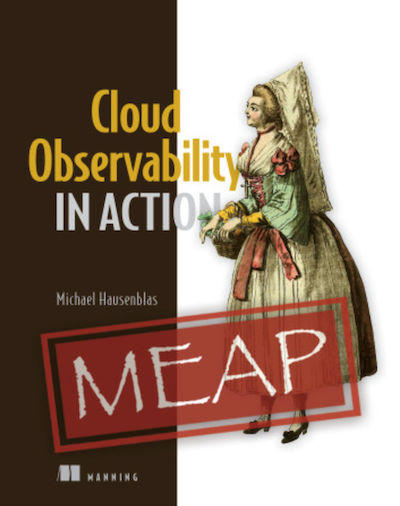Cloud Native Observability in Action¶
Welcome to the Cloud Native Observability in Action book! This is your Return on Investment driven hands-on guide to introducing observability in your organization. The book is currently available online via Manning and also the code snippets we use for the hands-on exercises throughout the book are available.
We expect that the book goes into print in August 2023.

Chapter 1: End-to-end Observability Example
Chapter 5: Back-end Destinations
Chapter 6: Front-end Destinations
Chapter 8: Distributed Tracing
Chapter 9: Developer Observability
Chapter 10: Service Level Objectives
Chapter 11: Signal Correlation
More details about all chapter content ...
What is observability?¶
Observability is the capability to continuously generate and discover actionable insights based on signals from the system under observation with the goal to influence the system.
What does Return on Invesment mean in this context?¶
Working backwards from technical and business goals (be that MTTR reduction, cost savings, or increasing developer productivity) to establish crisp returns.
Read more about the concept in the short paper Return on Investment Driven Observability.
What does this book offer?¶
In this book you will learn about the basic signal types (logs, metrics, traces, profiles), telemetry including instrumentation and agents, back-end destinations, front-ends and all-in-ones, goood practices around dashboarding, alerting, SLOs/SLIs, developer observability, and signal correlation.
It helps you understanding observability concept using open source tooling and applying observability in the context of cloud native environments.